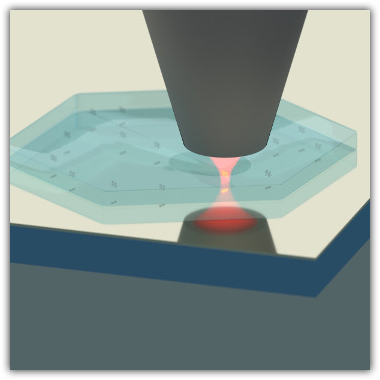Coherent coupling of a single molecule to a scanning Fabry-Perot microcavity

Physicists in many research areas aim to realize efficient devices that can generate intricate quantum states and perform complex operations. Considering that photons are ideal carriers of quantum information while material entities are advantageous for switching and storage, the efficient interaction of single photons and single material systems becomes a key issue for the success of these efforts. Thus, we have investigated the enhancement of the coupling efficiency between light and an organic molecule by employing an ultrasmall cavity.
We doped single aromatic hydrocarbon dye molecules into a thin organic crystal and placed it in a Fabry-Perot cavity containing a mirror with a radius of curvature of 5 μm. By tuning the cavity on and off the molecular resonance, we showed that a single molecule could attenuate 38% of the light that enters the microresonator. Furthermore, we exploited this efficient coupling to demonstrate controllable switching of a light beam from attenuation to amplification via stimulated emission. We also discuss the prospects of mechanical actuation of molecular emission via the microcavity.
Coherent coupling of a single molecule to a scanning Fabry-Perot microcavity
D. Wang, H. Kelkar, D.-M. Cano, T. Utikal, S. Götzinger, and V. Sandoghdar
Phys. Rev. X 7, 021014 (2017)






